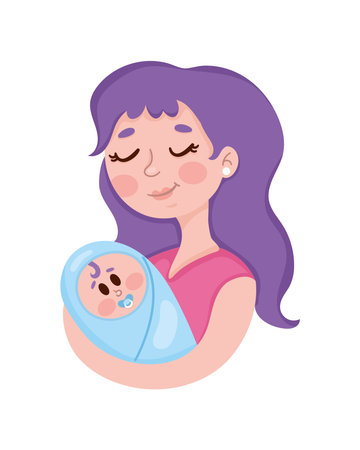1. Understanding the Right Age for Potty Training
One of the most common questions parents ask is, “When should I start potty training my toddler?” The truth is, there is no one-size-fits-all answer. Every child develops at their own pace, and its important to recognize when your little one is truly ready.
Typical Age Range for Potty Training
Most toddlers begin showing signs of readiness for potty training between 18 months and 3 years old. However, some children may be ready earlier or later than this range. Below is a general guideline of when children might be developmentally prepared:
| Age Range | Potty Training Readiness |
|---|---|
| 12-18 months | Some early signs may appear, but most children are not yet ready for full potty training. |
| 18-24 months | Toddlers may start recognizing when they need to go but might not have full control. |
| 24-36 months | This is the most common age range for potty training as many toddlers develop physical and cognitive skills needed. |
| 36+ months | If your child has not shown interest yet, they may just need more time. Some kids train closer to age 4. |
Why Every Child Is Different
No two toddlers are exactly alike, and thats perfectly normal! Some children may show interest in using the potty early on, while others take longer to feel comfortable with the process. Factors such as personality, developmental milestones, and even whether they have older siblings can influence when they are ready to begin potty training.
Boys vs. Girls: Is There a Difference?
You may have heard that girls tend to potty train earlier than boys. While this can be true in some cases, its not a strict rule. Boys and girls develop at their own pace, and readiness signs are more important than gender when deciding when to start.
The Importance of Patience
The key to successful potty training is patience. Rushing the process before your child is ready can lead to frustration for both of you. Instead of focusing on age alone, watch for signs that indicate your toddler is developmentally prepared to begin potty training.
2. Key Signs Your Toddler Is Ready
Every child develops at their own pace, but there are common signs that indicate your toddler may be ready to start potty training. Recognizing these cues can help make the transition smoother and more successful.
Staying Dry for Longer Periods
If your toddler stays dry for at least two hours during the day or wakes up from naps with a dry diaper, it’s a good indication that they are gaining bladder control. This is an essential step in potty training readiness.
Showing Interest in the Toilet
Many toddlers become curious about the toilet and what happens when others use it. They may follow you into the bathroom, ask questions, or even try to imitate older siblings. This curiosity is a great sign that they are mentally preparing for potty training.
Communicating Their Needs
Your child may start telling you when they need a diaper change or when they have just gone potty. Some toddlers will use words, gestures, or facial expressions to indicate they are aware of their body’s signals.
Other Readiness Signs
In addition to the key indicators above, here are some other signs that your toddler might be ready:
| Sign | Description |
|---|---|
| Able to Follow Simple Instructions | If your child can understand and follow basic directions like “sit down” or “bring me your shoes,” they may be ready for potty training steps. |
| Aware of Dirty Diapers | Toddlers who show discomfort with wet or soiled diapers and want them changed quickly are starting to recognize when they go potty. |
| Able to Pull Pants Up and Down | This motor skill is important for independence in using the potty. |
| Keeps a Regular Bowel Movement Schedule | If your child tends to go at the same times each day, it can make potty training easier. |

3. Choosing the Right Approach
Every toddler is different, so choosing the right potty training method is key to making the process smoother for both you and your child. There are several approaches to consider, and finding the one that best fits your toddler’s personality and readiness can make a big difference.
The Three-Day Method
This method is an intensive approach where you dedicate three full days to potty training. Your toddler goes diaper-free, and you focus on encouraging them to use the potty consistently. It requires patience and close supervision but can be effective for children who are ready for a fast transition.
Gradual Training
If you prefer a more relaxed approach, gradual training might be the best option. This involves slowly introducing your toddler to the potty, starting with sitting on it fully clothed, then transitioning to using it regularly over time. This method works well for toddlers who need a little more time to adjust.
Child-Led Potty Training
This approach allows your toddler to take control of their own potty training journey. Instead of following a strict timeline, you wait for signs of readiness and let your child decide when they want to start using the potty. It helps reduce pressure and makes the process feel more natural for some children.
Comparing Potty Training Methods
| Method | Description | Best For |
|---|---|---|
| The Three-Day Method | An intensive approach that focuses on quick transition within three days. | Toddlers who show strong signs of readiness and parents who can commit to a focused training period. |
| Gradual Training | A slower, step-by-step process that allows toddlers to adjust at their own pace. | Toddlers who need more time or parents who prefer a less stressful approach. |
| Child-Led Potty Training | A flexible method where the child decides when they are ready to start. | Toddlers who respond well to independence and parents who are patient with a longer timeline. |
No matter which method you choose, consistency and encouragement are key. Pay attention to your child’s cues and adjust as needed to create a positive potty training experience.
4. Setting Up for Success
Creating a positive and supportive environment can make potty training easier for both you and your toddler. By choosing the right potty gear, setting up a rewards system, and maintaining consistent routines, you can help your child feel more comfortable with this big transition.
Choosing the Right Potty Gear
The right equipment can make a big difference in how smoothly potty training goes. Some toddlers prefer a small potty chair, while others feel more comfortable using a potty seat on the regular toilet. Consider what works best for your child and household.
| Potty Training Gear | Benefits |
|---|---|
| Potty Chair | Child-sized, easy to access, helps with independence |
| Potty Seat for Toilet | Saves space, helps transition to regular toilet faster |
| Step Stool | Encourages self-sufficiency when washing hands or using the toilet |
| Training Pants | A good middle step between diapers and underwear |
| Flushable Wipes | Makes cleanup easier and teaches good hygiene habits |
Using a Rewards System
Praise and small incentives can encourage your toddler to stay motivated. Rewards don’t have to be elaborate—simple acknowledgments go a long way.
- Sticker Chart: Let your child earn stickers for each successful bathroom visit.
- Small Treats: Offer a small reward like a special snack or extra storytime.
- Loud Applause: Celebrate successes with claps and excitement.
- Privilege Rewards: Extra playtime or picking out their own underwear can be great incentives.
Sticking to Consistent Routines
Toddlers thrive on routine, so keeping potty breaks consistent will help them adjust faster. Try scheduling bathroom trips around key daily activities:
- After waking up: Encourage them to sit on the potty first thing in the morning.
- Before meals: A quick trip before eating can help prevent accidents.
- Before naps and bedtime: Making this part of their routine reduces nighttime accidents.
- Every 1-2 hours: Regular reminders can help them recognize when they need to go.
By creating a supportive environment with the right tools, positive reinforcement, and steady routines, your toddler will have an easier time transitioning from diapers to the potty!
5. Handling Common Challenges
Potty training isn’t always a smooth process, and many toddlers face setbacks along the way. It’s important to stay patient and use positive reinforcement to help your child succeed. Here are some common challenges and how to handle them.
Resistance to Potty Training
Some toddlers may resist potty training, refusing to sit on the toilet or showing no interest in the process. This can be frustrating, but forcing them can create negative associations.
What You Can Do:
- Make potty time fun with books or songs.
- Use a reward system like stickers or small treats for sitting on the potty.
- Let your child choose their own potty seat or underwear to increase excitement.
- If resistance is strong, take a break and try again in a few weeks.
Frequent Accidents
Accidents are a normal part of potty training. Instead of getting frustrated, use them as learning opportunities.
How to Handle Accidents:
| Situation | Response |
|---|---|
| Your child has an accident at home. | Calmly remind them where the potty is and encourage them to try next time. |
| Your child has an accident in public. | Always carry extra clothes and wipes. Reassure your child and find a restroom for next time. |
| Your child forgets to tell you they need to go. | Set reminders or ask regularly if they need a potty break. |
Nighttime Training Struggles
Many children take longer to stay dry at night than during the day. Their bodies need time to develop bladder control while sleeping.
Tips for Nighttime Training:
- Limit drinks before bedtime.
- Encourage using the potty right before sleep.
- Use waterproof mattress protectors to make clean-up easier.
- If accidents happen frequently, consider using pull-ups at night until they’re ready.
Every child learns at their own pace, so be patient and supportive through setbacks. With consistency and encouragement, your toddler will eventually master potty training!


